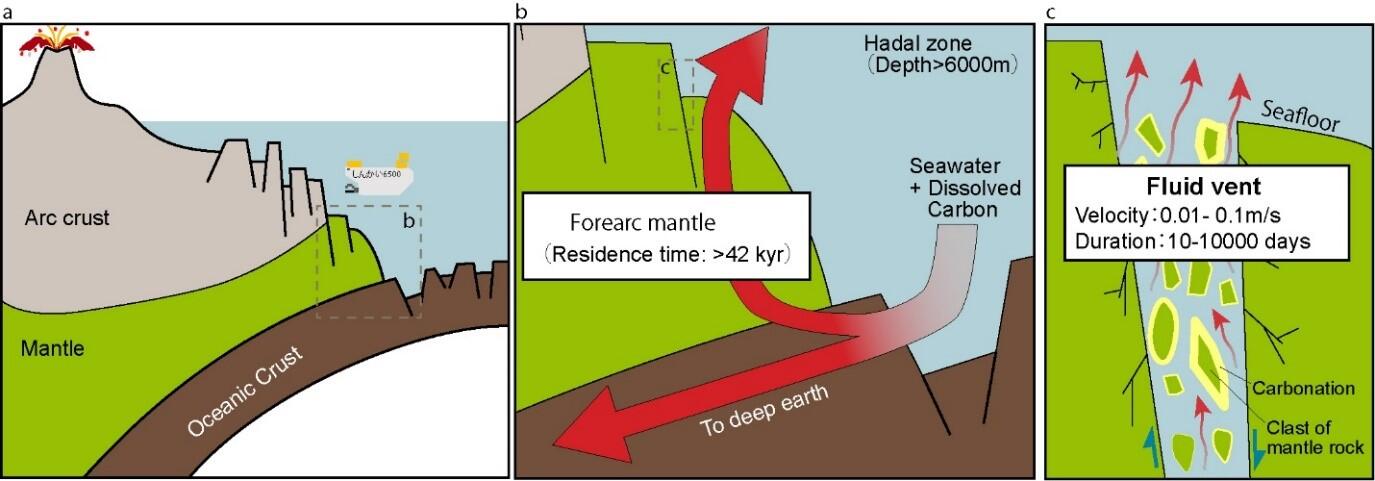The JAMSTEC research group consisting of Ryosuke Oyanagi, a visiting researcher, and Katsuyoshi Michibayashi, a guest researcher, of the Volcanoes and Earth's Interior Research Center and Marine Research and Development Organization, in collaboration with Tohoku University, Niigata University, Nagoya University, and the National Institute of Advanced Industrial Science and Technology analyzed rocks derived from the mantle containing carbonate obtained from the slope of the Izu-Ogasawara Trench at a depth of 6400 m. The group succeeded in clarifying the carbon cycle process in the shallow subduction zone.

Provided by JAMSTEC
In July 2017, the research group investigated the bedrock of Izu-Ogasawara Trench (off Chichijima) at a depth of 6400 m. It was found that the rock contained carbonate minerals, wherein carbon dioxide was fixed in the crystals. Therefore, to understand the carbon cycle mechanism in the earth, these carbonate minerals were analyzed.
Significant cracks were developed in the collected serpentinite, and were filled with needle-shaped aragonite crystal growth. In addition, carbonate veins often contained serpentinite debris. The three-dimensional structure revealed by X-ray CT indicated that the rock fragments were not in contact with each other and appeared as float rocks in the carbonate substrate. This revealed that high-speed water flow was involved in the precipitation of carbonate.
In addition, measurement of stable isotope composition and trace element composition of carbon and oxygen in carbonate revealed that the carbonate originated from carbon dissolved in seawater, deposited via the reaction between serpentinite and seawater under deep sea bottom conditions at approximately 2 °C. Moreover, the concentration of radiocarbon contained in carbonate (14C) is very low compared to that in seawater in the ultra-deep sea. The concentration of radioactive carbon is an index for estimating the age of carbon because it decreases with time owing to radiation decay. The low 14C concentration suggests that the carbon dissolved in seawater circulates in the forearc mantle rock for more than tens of thousands of years and then precipitates as carbonate minerals.
Furthermore, numerical analysis of the precipitation process, based on thermodynamics and fluid dynamics, revealed that seawater erupted from the mantle rock at a speed of 0.01-0.1 m/s, and the eruption continued for several decades. Since the ejection speed of this fluid is very similar to that of the fluid in hydrothermal vents, it can be concluded that seawater remained in the forearc mantle for more than tens of thousands of years; eventually, due to crushing, eruptions continued to occur for a short period of several decades. Oyanagi, the visiting researcher, stated, "The carbon cycle within the earth is an important phenomenon that affects the atmospheric carbon dioxide concentration in the future. However, the exact location of this carbon, the amount in circulation, and duration of circulation are unknown. We aim to explore the possibility of engineering applications by conducting basic research and clarifying the mechanism of the underground carbon cycle."
This article has been translated by JST with permission from The Science News Ltd.(https://sci-news.co.jp/). Unauthorized reproduction of the article and photographs is prohibited.




